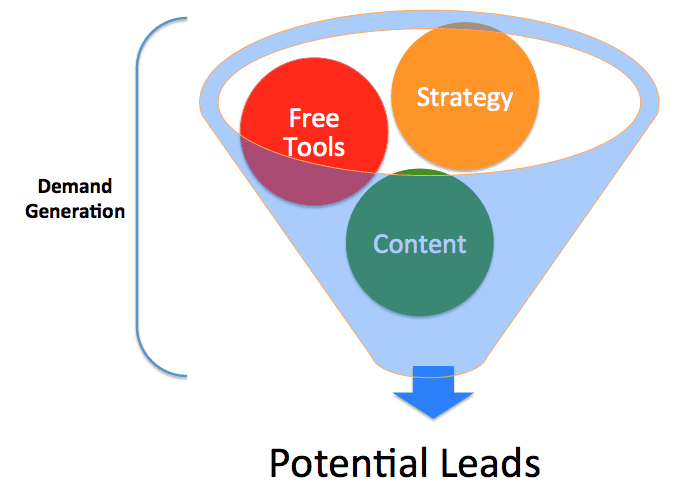Demand generation is a type of inbound marketing and is the umbrella term for the full marketing strategy (or “marketing funnel”) that creates interest in your brand’s product or service.
While a demand generation strategy technically encompasses the entire customer journey from interest all the way to lead generation, an easier way to think about demand generation is through the lens of how a potential customer feels about your product or service. A demand generation marketing strategy starts by assessing how well a potential audience knows your brand, identifying ways to introduce that brand to a new buyer group, and then nurturing that relationship by gaining trust and authority. What is the problem that your brand can solve, and how much does your customer trust your brand to be the solution for that problem? This is particularly important in business-to-business (B2B) demand generation, as other businesses are searching for solutions to get their own brands into the public purview.
Demand generation strategy can vary from brand awareness campaigns on social media all the way to thought leadership (webinars, eBooks, white papers, etc.) in your brand’s industry. At the end of the day, demand generation is largely about working to ensure your potential audience knows about the brand you represent, the value behind it, and the trust that the customer should have in your brand.
Demand generation has the potential to help the entire customer journey, whether it’s dealing with creating demand for the product or the sales team pursuing qualified leads.

Why is demand generation important?
As previously stated, demand generation is a type of inbound marketing aimed at developing awareness for a brand and its services. However, the importance of demand generation is far beyond establishing general awareness; at its best, a good demand generation marketing strategy can help to imbue a value and trustworthiness in your brand that may not have existed beforehand. It’s, in a phrase, reputation setting at a marketing level. And when it comes to B2B marketing, being able to affirm the trustworthiness of your brand is paramount.
On the business side, demand generation is the first (and necessary) step to moving onto lead generation, which results in a more tangible action by the customer. Customers begin using your brand and its product at a higher rate, reinforcing the opportunities presented at the start of the demand generation marketing process.
